EPITAPH 1997
2021.9-2022.5
Inspired by Chinese Taoist Exorcism, Epitaph 1997 is a blend of Eastern Horror and thrilling combat. The game is a collaborative piece made by a team of eight people in two semesters using Unity for the NYU Game Center capstone showcase. The protagonist is a police detective as well as a Taoist priest, who can utilize both crime knowledge and Taoist craft to solve the mystery and exorcise the ghost.
In this project, I was mainly responsible for Game Mechanic Design, Combat and Boss Battle Design, Environment Design, Modeling and Animation, and Shader Effects.
Epitaph 1997 Game Trailer
Game Mechanism
In this game, the player will act as a police officer with some special Taoist priest’s abilities, investigating a mysterious case that happened inside an abandoned apartment located in an urban village in southern China in the late 90s. The contrast between police and rituals, the combination of shooting and Taoism spells, and the background setting of an urbanizing village altogether created weird collisions that set the tone of our horror aesthetic.
We determined to recreate the time of the 1990s when China just started developing and getting modernized. During that time city gradually took the space of the countryside, and the urban crashed with superstition, which gave birth to a series of urban legends or modern folklore. We embedded fragmented narratives we designed based on those folk stories within the experience of exploring the urban village’s apartment, to record the myths and culture that belong to this specific period of China.
the entire game flow
The game has an isometric shooting mechanic and the mechanic was inspired by the spells and rituals in Taoism. In our narrative, the protagonist is a police officer who also knows some Taoist rituals and this kind of contrast between modern realism and traditional myths is one of the main characteristics of our game, so we combined shooting with Taoism.
In Taoism, there is a special media called Fu, which can help Taoist priests to cast spells. Fu is a piece of paper with special signs written on it. In our game, we took one characteristic of Fu which is it can be combined with different materials and cast different spells. This then developed into our main shooting mechanism: players control the main character to shoot out Fu during battle, and they can combine their Fu with different materials and create different effects. Players can also use multiple materials to have interconnective effects adding on top of each other. Based on different combat situations, players need to choose to use different combinations to defeat enemies.
Another important mechanism is that players can attain ghost materials when attacking the boss enemy. The combination of Fu and Ghost material can create a more powerful effect and the effect is similar to the boss enemy's attack. The player can learn the effect while fighting the boss and use the ability of the boss to counter itself.
the rule of the material combination
Combat and boss battle Design
In our narrative background, the protagonist is searching for the reason for the abnormality in a haunted apartment. The case was about some ghosts attached to stuffed animals in the apartment, so based on this background, we chose to use small stuffed bears as our enemies, and a larger broken bear to be the boss.
The small stuffed bears are designed to have regular attacks but they have relatively higher moving speeds. While players are experiencing some of the first battles, it is quite easy due to the low quantity of small bears. The combat gets tougher as players go deeper into the level because later combats have more bears, and even though they only have simple attacks, their speed is slightly faster than the player so it can create tension when multiple small bears come out and chase the player.
The boss has a regular attack with a larger range and has two abilities, one is to summon small bears, and the other one is a large-range soundwave attack which is related to our narrative. The soundwave attack has a special range of which the player gets closer to the enemy the higher the damage they will undertake from the attack. It is designed to give the boss a long windup so that players can have enough time to read the action and run or stun the boss. The boss will only use this ability in the second phase. The large-range attack and the long windup can give the player a break from the tension of the boss' chasing, and break the regular attack pattern of the boss.
A Playthrough of Epitaph 1997
environment design and atmosphere
The background is in an apartment located in an urban village in southern China in the late 90s. Most of the models and the decors in this apartment are designed based on the unique interior design style that prevailed in Guangdong, China during that time.
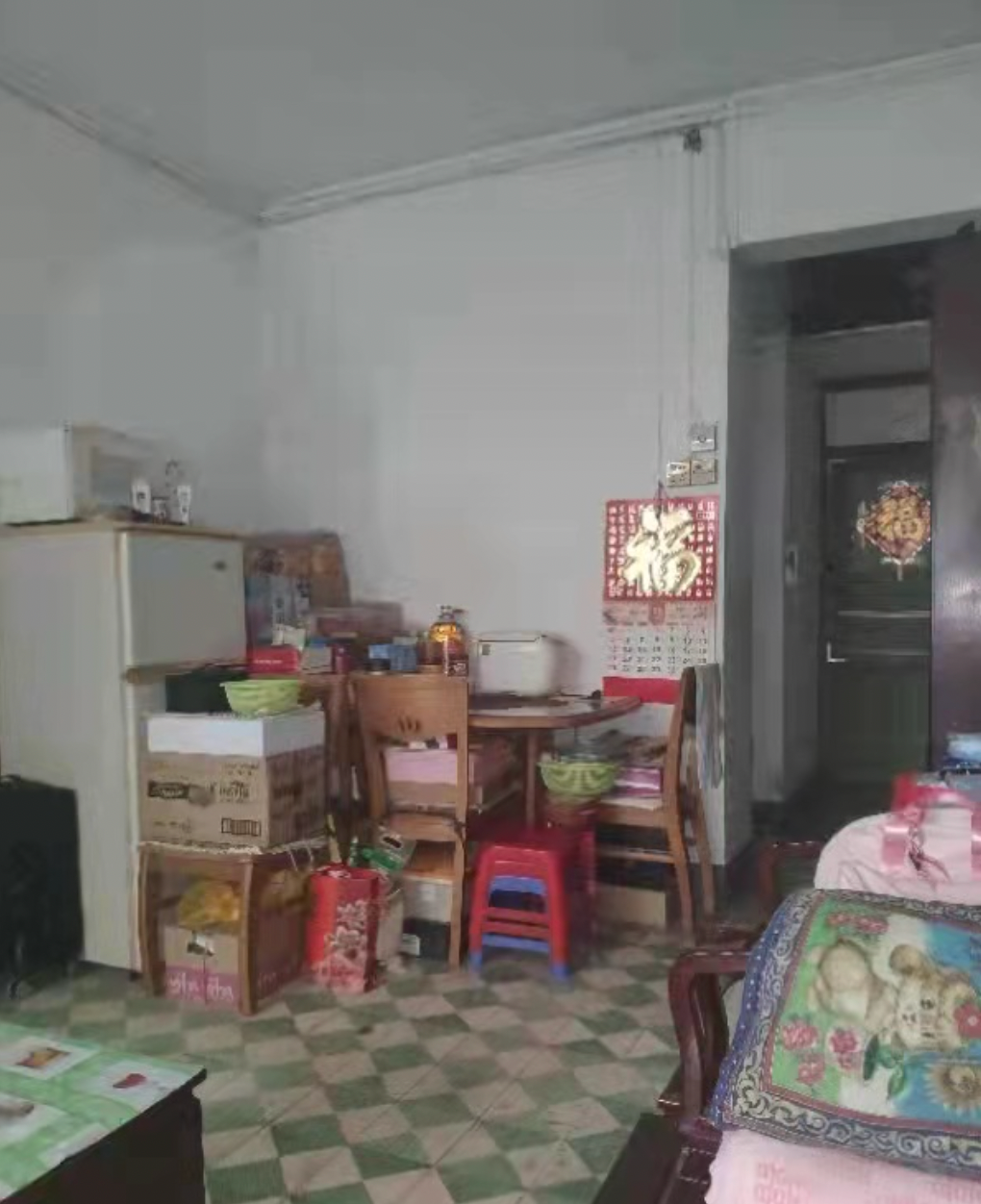

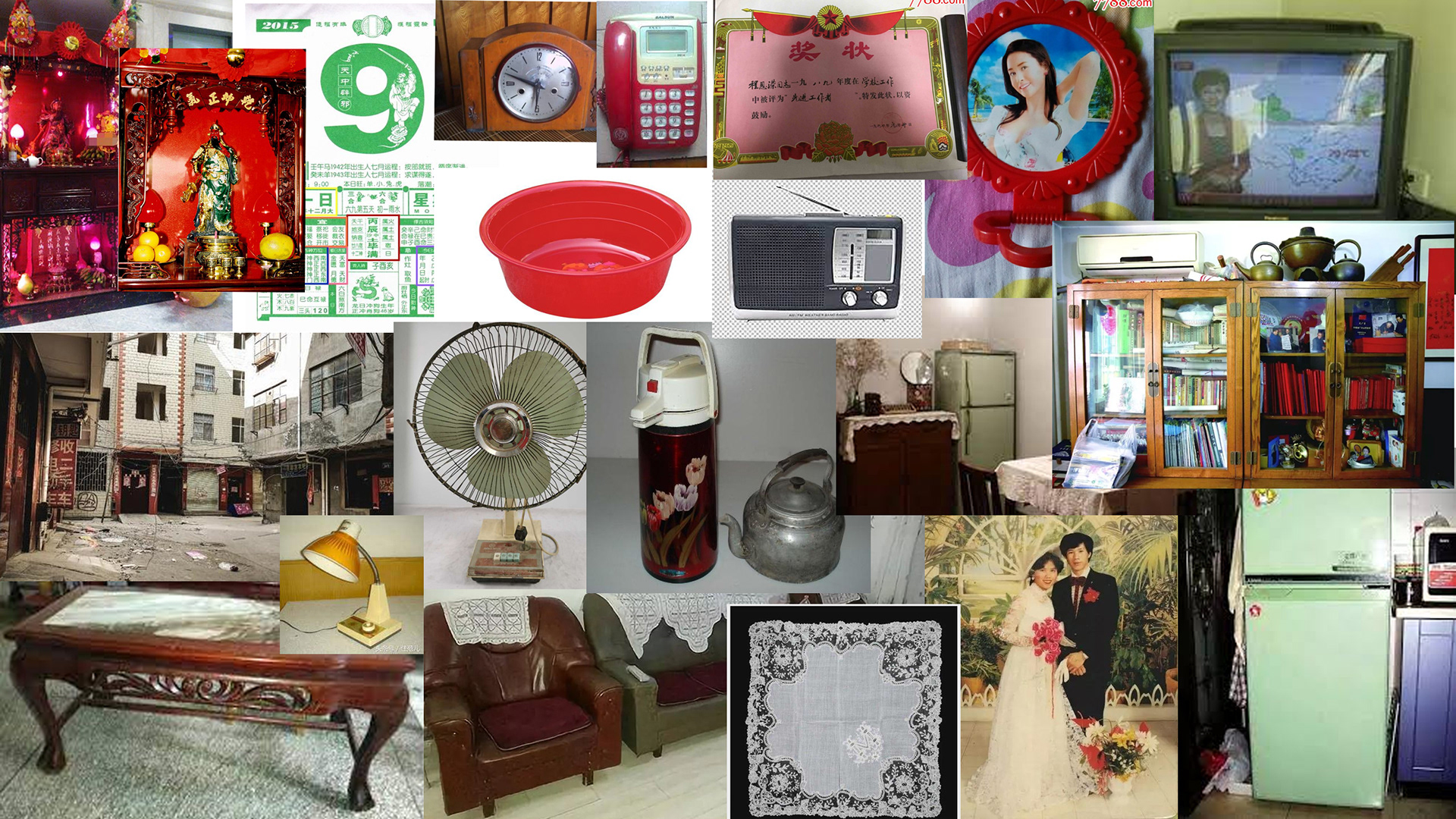
Inspirations and Mood Board (left) and 2D Environment Concept Art by Hank Feng (right)
According to the mood we set for our game and the concept art made by our groupmate, I was able to create a series of models and textures like the furniture and decor and build the environment. In our early scene without postprocessing, we found out the scene was too dull and we wanted to add more characteristics to our environment.
Early Scene and Environment During Development
In order to set the tone and atmosphere aligned with our story and with our distinct mechanism, we set the overall visual style of our game to be a stylistic style with high contrast and dramatic lighting to create a suspension in our environment. The overall lighting is dark so that we can use special lighting to emphasize the main character and to guide our players in our level.
For postprocessing of the whole scene, I chose to combine cell shading with an outline shader to create a toon shader to let the outcome have a closer sense of hand-drawn style. In this shader, I made adjustments so that the steps of the color would become more dramatic to emphasize the lighting and the horror atmosphere.
Part of the shader codes I wrote for the game's postprocessing
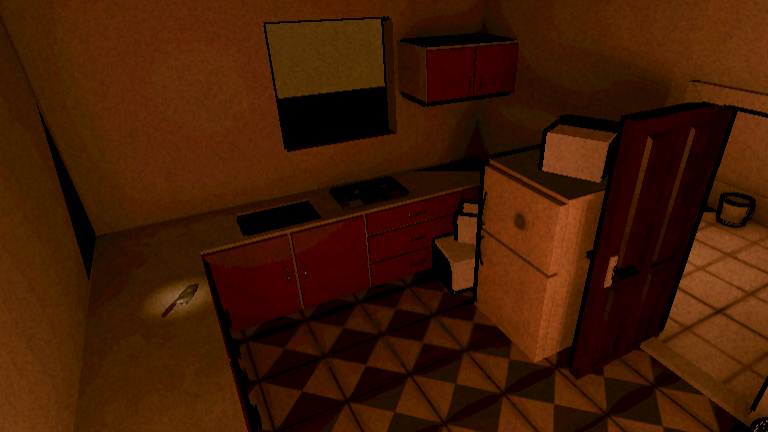

Final Scene with Postprocessing
character Modeling and Animation
The character design incorporated the contrast between modern Chinese police officers and a traditional Taoist Preist, which was inspired by some of the horror movies directed by a Hong Kong director called Zhengying Lin.
I was responsible for modeling the character out from the 2D character concept art designed by our group mate. During the process of making the model, I chose to use a more stylized way of sculpting to incorporate more of the sketch-like style of the original drawing to fit into the general art direction of our game.


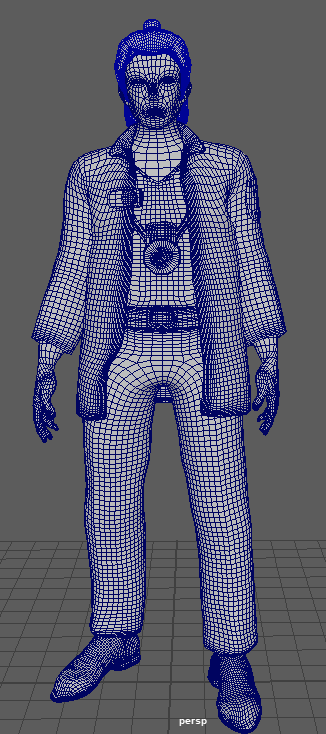
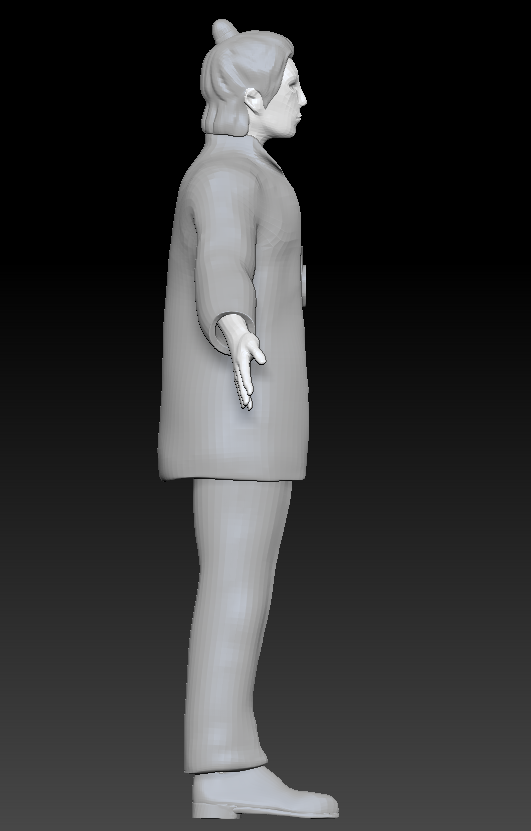

Concept Art made by Hank Feng (left) and Model done by me (right)
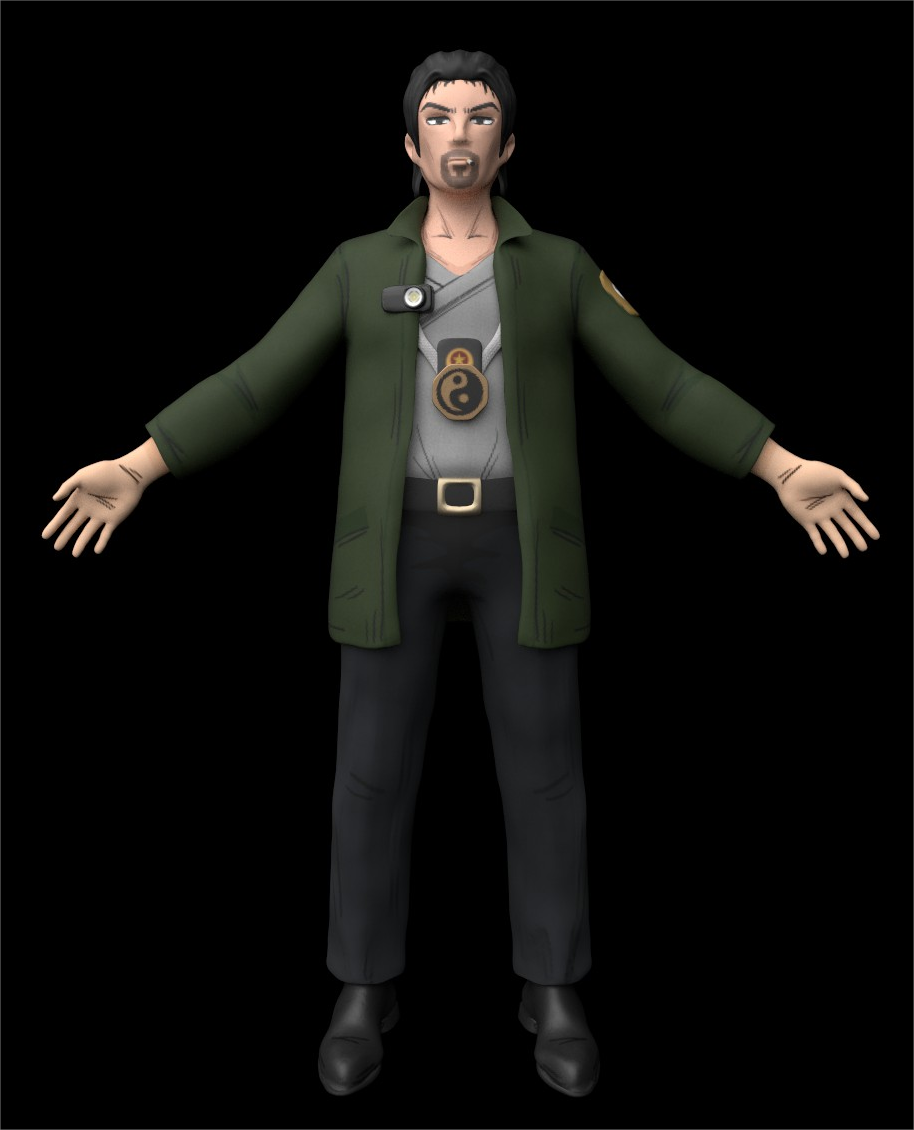

Character Model with Texture
Enemy Modeling and Animation
The concept art of our enemy is designed according to our narrative and our combat design. The small bear has a lighter look because their moving speed is faster, and the large bear as the boss enemy has a more clumsy look due to its heavy attack and relatively slower moving speed.
The large bear is designed to have a broken belly and it is related to part of our narrative. The broken belly is also related to the special attack it has: as it casts its soundwave attack, it will rip its belly open. The intention of designing such a special move is to give players a hint about the upcoming attack and give them enough time to react. It also adds more flavor to the movement of the boss and blends the narrative into our combat. To create a smooth movement of the large bear ripping its belly, I used the blend shape method on the model while animating it.

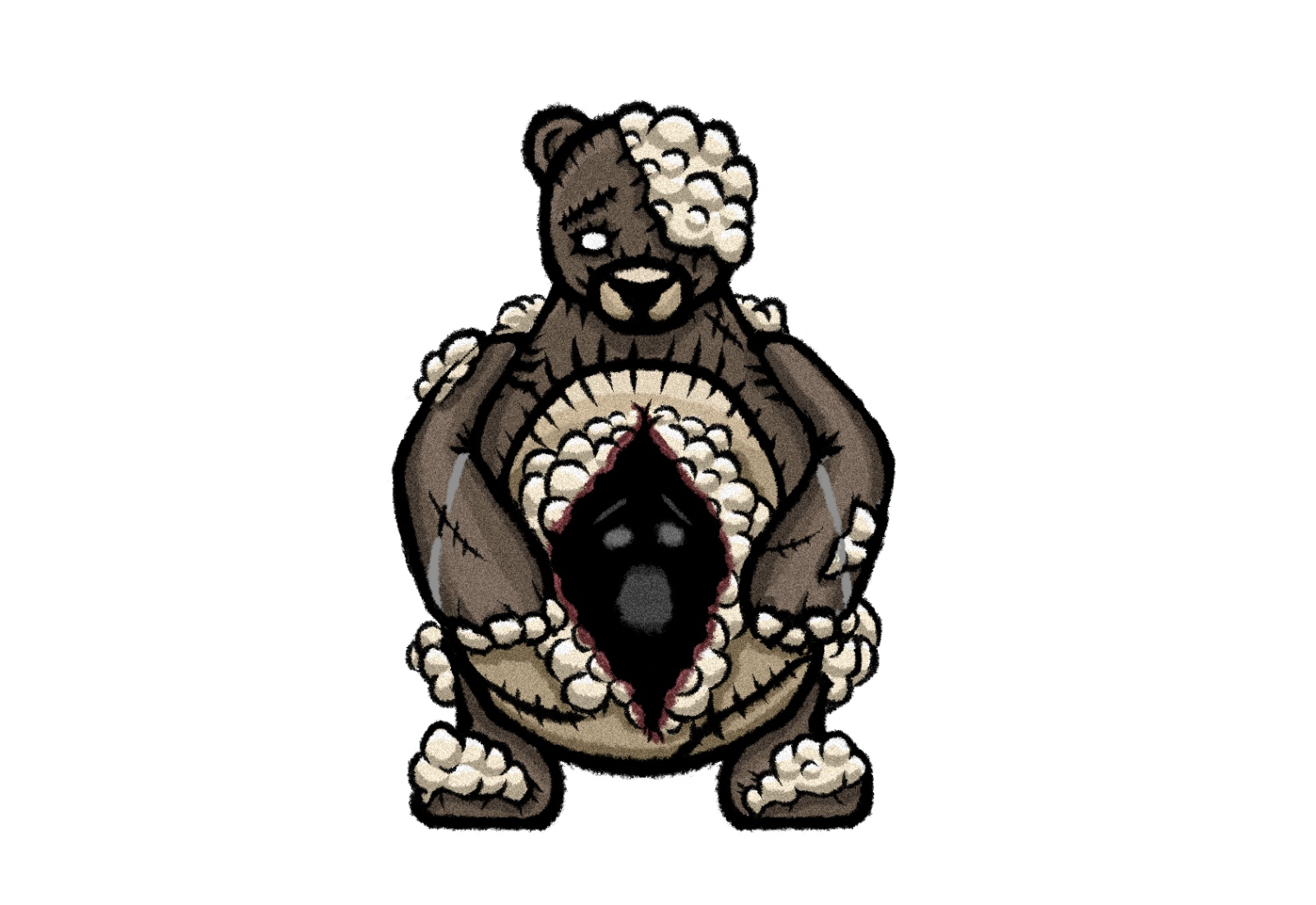
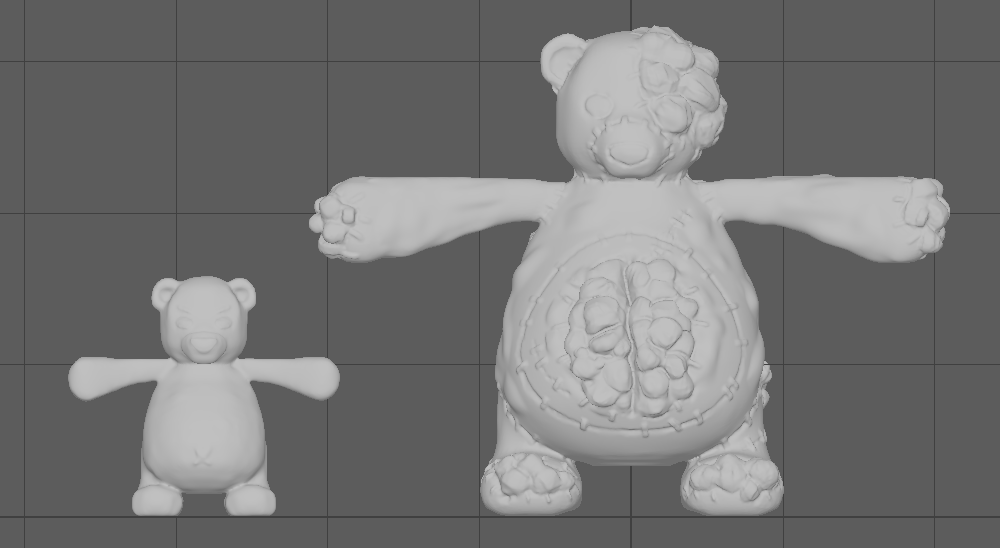
Concept Art made by Hank Feng (left) and Models done by me (right)


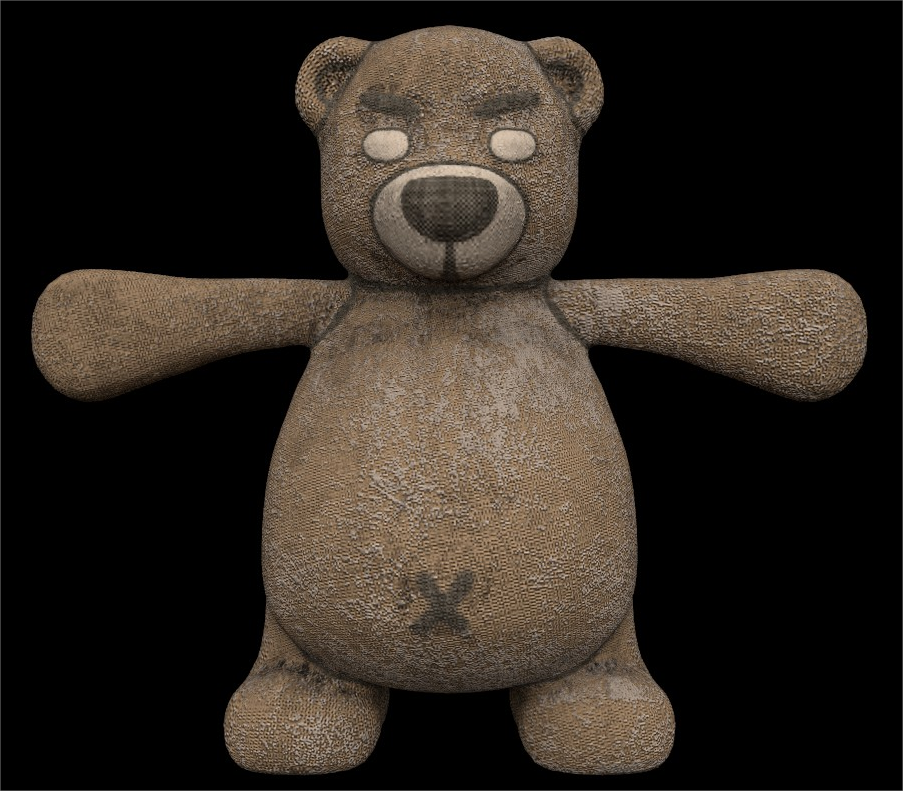
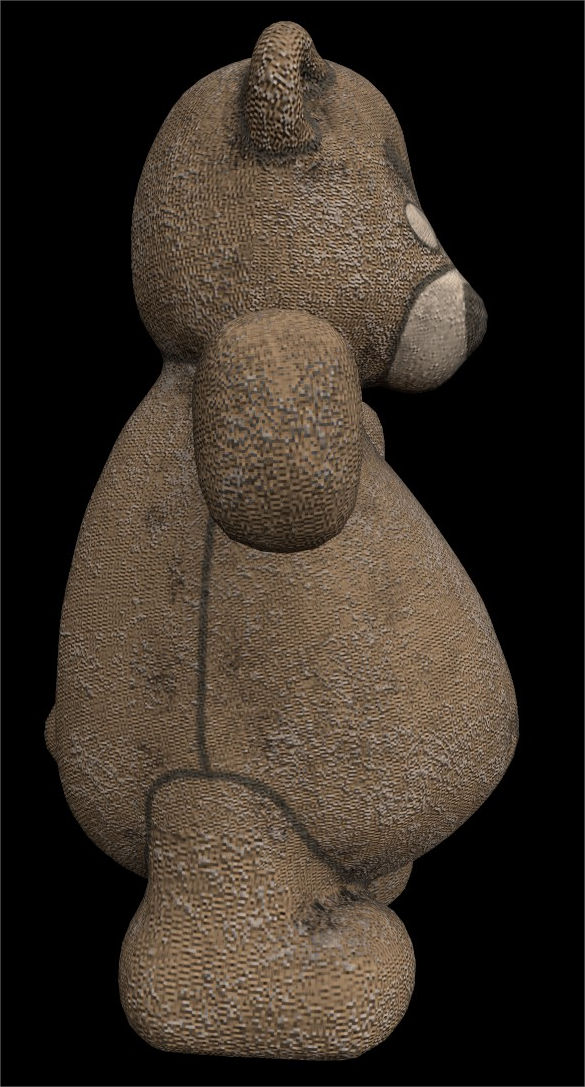
Enemy Models with texture
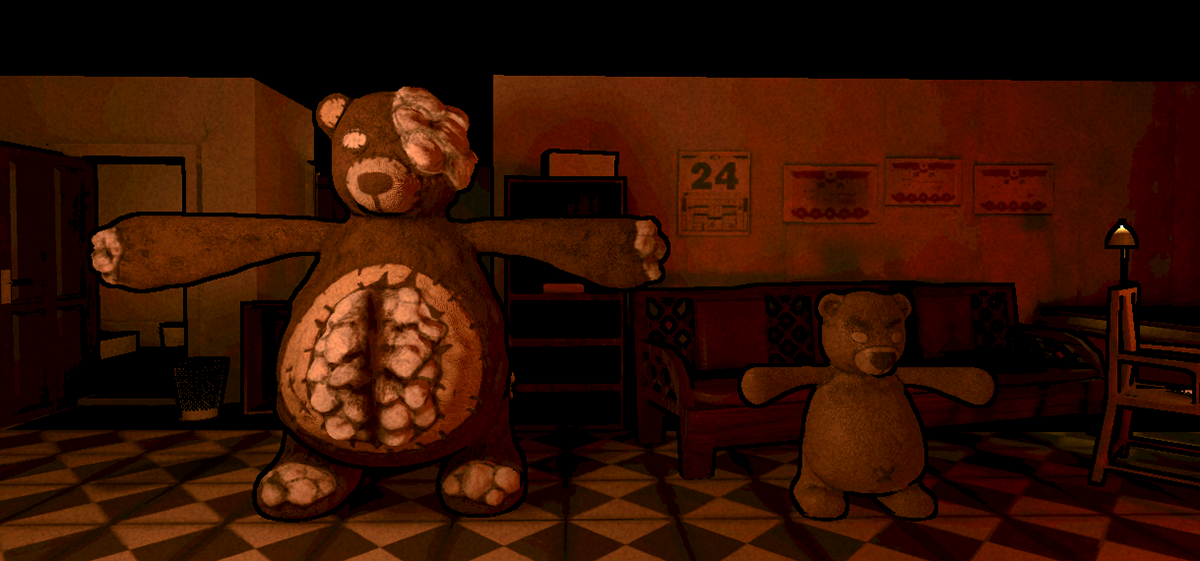
Enemy Models with texture in the actual game environment